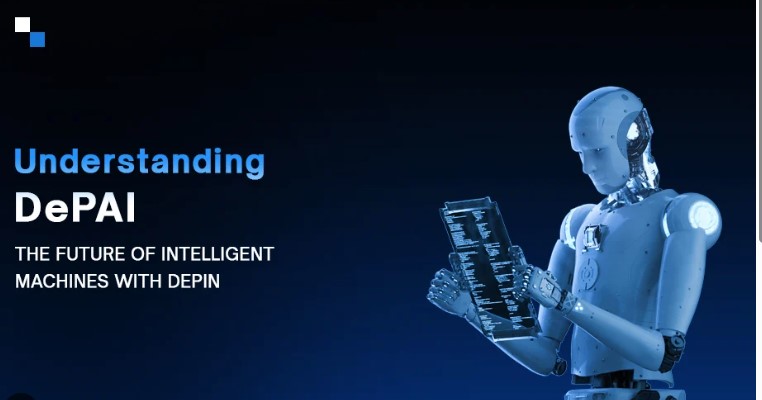What Is DePAI? The Rise of Decentralized Physical AI in Web3

DePAI: The Rising Trend in the Machine Economy
By Charlotte Hayes
In January 2025, Nvidia CEO Jensen Huang outlined what he believes is the next frontier in artificial intelligence: Physical AI (PAI) — a global intelligence framework designed to power robots and autonomous machines in the physical world.
The concept proposes that machines must evolve beyond digital intelligence and develop the ability to navigate, adapt, and interact with real-world environments. PAI aims to become the foundational infrastructure for autonomous agents capable of performing complex physical tasks.
Not long after, the idea was embraced by the blockchain industry — but with a decentralized twist.
From PAI to DePAI: When AI Meets Web3
By February, the crypto analytics firm Messari published an in-depth report introducing DePAI (Decentralized Physical AI) — a concept at the intersection of artificial intelligence, decentralized infrastructure, and real-world robotics. It outlines how decentralized protocols could be used to coordinate machine intelligence across global networks, integrating with DePIN (Decentralized Physical Infrastructure Networks) and emerging Web3 technologies.
This would enable an open-source ecosystem where devices, agents, and users interact transparently without reliance on centralized control — opening the door to a new kind of machine economy governed by distributed logic.
The vision caught the attention of notable figures in the Web3 space, including crypto influencer Miles Deutscher, who in April 2025 called DePAI "the biggest trend in crypto for the next two years."
The Core of DePAI: A Robotic Economic Layer
DePAI's long-term promise is to create a permissionless infrastructure for robotics and intelligent machines. Under this model, autonomous agents — whether delivery drones, factory robots, or home assistants — could access blockchain-based tools to:
-
Negotiate contracts and services (via smart contracts)
-
Earn tokens or rewards for completed tasks (machine-to-machine payments)
-
Contribute data to decentralized marketplaces
-
Operate through community-managed protocols instead of centralized cloud APIs
This would enable a global, self-regulating robotic economy — one in which value exchange happens automatically, securely, and transparently between machines and human users.
Why DePAI Matters
The shift toward DePAI reflects a larger trend in the digital economy: moving intelligence from cloud servers to edge devices and reducing dependency on centralized AI providers.
It also raises critical questions about:
-
Ownership of machine-generated data
-
The role of crypto incentives in robotics
-
The governance of autonomous systems
-
How humanity will coexist with billions of intelligent agents
If successful, DePAI could become the operating system for the physical world — combining AI logic, blockchain transparency, and open-source collaboration.
What Comes Next?
While the infrastructure is still early, protocols in the DePIN category such as Helium, DIMO, and io.net are already laying the groundwork for decentralized hardware and compute layers. Integrating these with AI-focused tooling could give rise to developer stacks specifically designed for DePAI use cases.
Messari, Delphi Digital, and other research firms have signaled growing institutional interest in the space, and new DePAI-related token launches may follow in late 2025.
As Web3 shifts beyond digital finance and into the real world, DePAI may represent one of the most transformational ideas at the edge of blockchain, robotics, and artificial intelligence.
